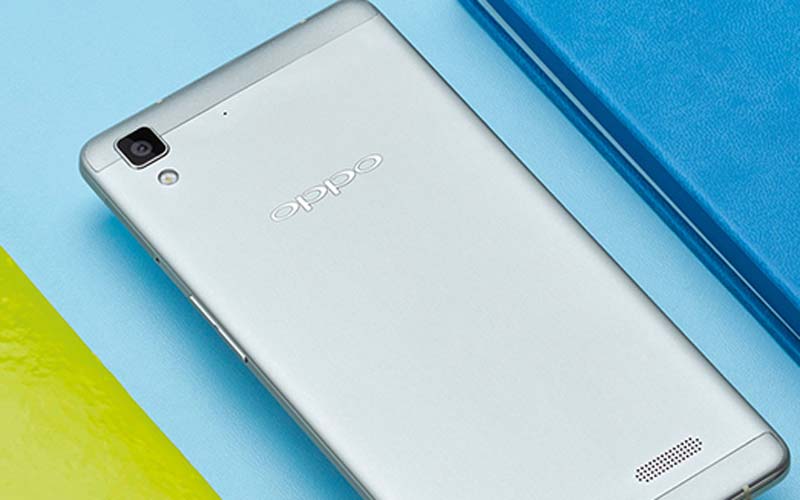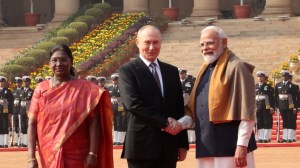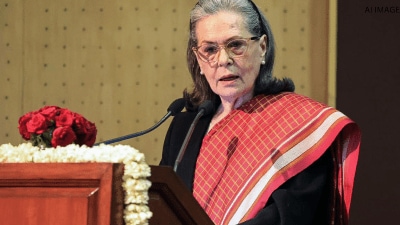Oppo and Vivo now in top five global smartphone vendors: Counterpoint
Smartphones shipments rose modestly with Huawei, Oppo and Vivo becoming the top performers.
 Oppo and Vivo are now the top four and fifth smartphone vendors in the world. (Image source: Oppo)
Oppo and Vivo are now the top four and fifth smartphone vendors in the world. (Image source: Oppo)
The global smartphone market saw a modest growth rate with shipments increasing by 3 per cent in the second quarter of 2016, while Chinese players Oppo and Vivo are now in the list of top five global vendors, according to data from research firm Counterpoint Research. Counterpoint’s data shows that total shipments reached 360 million units in Q2 2016 with an yearly growth of 3 per cent. However, the top 10 brands contributed to almost 70 per cent of the shipment volumes for smartphones, which highlights their dominance in the market.
Data also shows there was weaker demand from the Latin America market, but high growth in South-East Asia which help the shipments grow. Chinese brands Huawei, Oppo & Vivo dominated Q2, according to Counterpoint’s data, with all three players scaling fast and setting up a benchmark in mid to high-end flagship segment. The trio of Oppo, Vivo and Huawei grew faster than the rest, and captured almost a fifth of the smartphone market, says the research firm.
“First half of 2016 was challenging for the overall smartphone industry as growth in key countries across both developed and emerging markets remain stagnant. The slowing smartphone demand from double digit rate end of last year to a dramatic drop of low single digit this year can be attributed to weaker economic climate in many emerging countries as well as slowing upgrade cycles in developed markets,” said Tarun Pathak Senior Analyst at Counterpoint Research.
Analysts at Counterpoint also added that Oppo and Vivo’s growth is not surprising. “Oppo and Vivo growth story has surprised everyone in the industry, however, this has been as a result of years of investment in building strong offline distribution channels, competent R&D team, slicker product portfolio and aggressive marketing and promotions,” said James Yan Research Director at Counterpoint.
He added, “The BBK group which owns both Oppo and Vivo is technically the world’s third largest smartphone OEM shipping more than 39 million units during the quarter, slightly behind Apple.”
While shipments were up, revenue in this market remains flat, according to Counterpoint data. “The smartphone industry revenues however remained flat due to growth in Chinese brands such as Oppo and Huawei pushing mid-tier and affordable premium models. Apple and Samsung saw its smartphone ASP decline 13% and 10% annually respectively dragging down overall smartphone industry revenues,” said Tina Lu, Senior Consultant.
Samsung and Apple, however, still control more than half of the smartphone industry’s revenues.
In terms of individual vendors, Samsung is on top with market share of 21 per cent, and smartphone shipments rising by 3 per cent annually. Counterpoint says the Galaxy S7 series has given Samsung a strong momentum in the flagship segment, while J series is driving volumes in emerging markets.

Apple is number two, even though the performance was weaker compared to the company’s own high standards. The shipments declined by 15 per cent year on year.
Huawei is at number three with 9 per cent market share. Oppo is at number four 6.4 per cent market share. According to Counterpoint, Oppo’s offline market still contributes more than 70 per cent of total sales in China
Vivo is at number five and grew 62 per cent year-on-year with shipments reaching 16 Million units. Counterpoint’s data shows Vivo grew by 250 per cent in India and shipments crossed 1 million per quarter, something only seven brands have done so far in the country.
Also read: Smartphone growth flat, says IDC; Lenovo and Xiaomi pushed out of top 5
ZTE and Xiaomi were next on the list with both shipping close to 15 million smartphones each. However both have seen sales drop.
In terms of revenue share for smartphone vendors, Apple is on top with a 29 per cent of share, followed by Samsung which has 23 per cent revenue share. Huawei, Oppo and Vivo were the strong performers with revenues growing 84 per cent, 152 per cent, and 66 per cent annually. Xiaomi was the sixth largest brand in terms of revenue which slipped 14 per cent.







